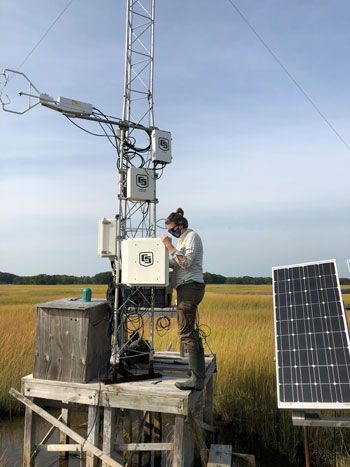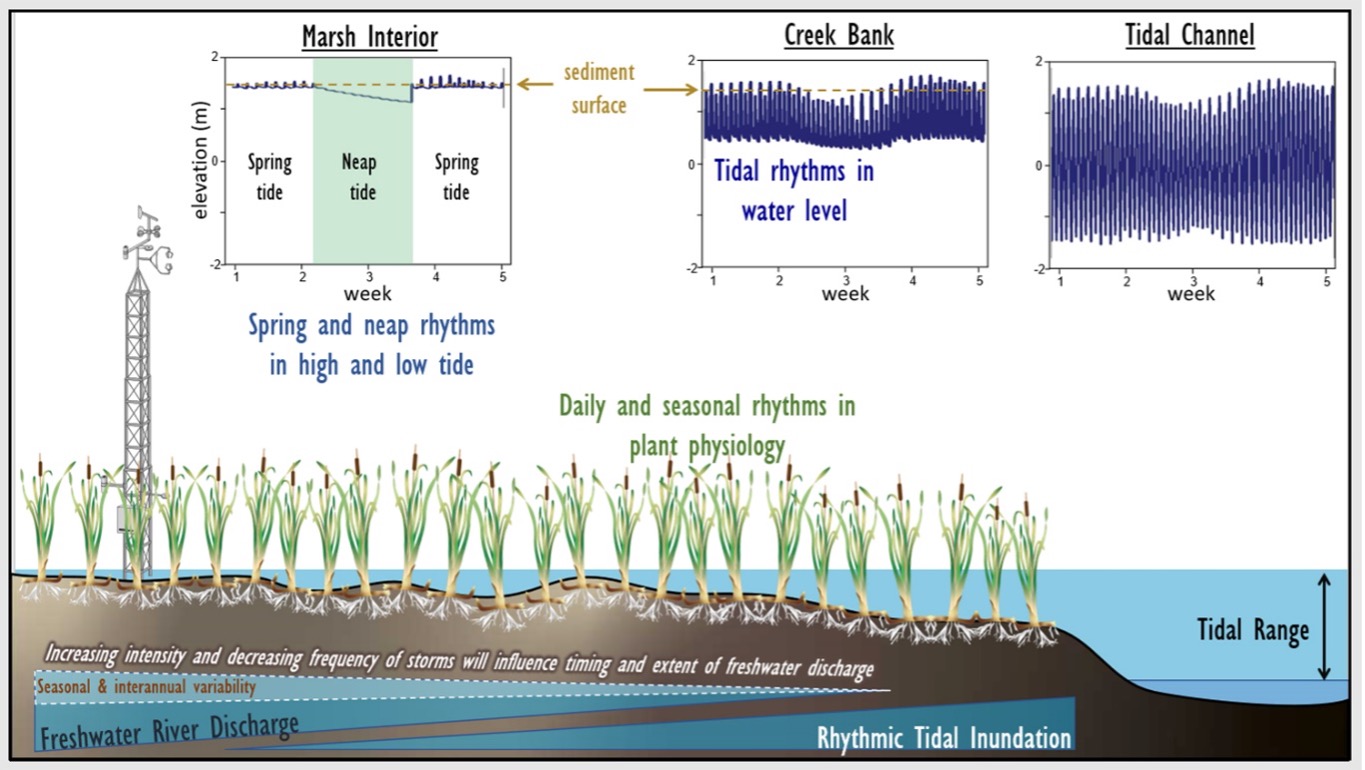U.S. Department of Energy Funds Innovative Study of Carbon Cycling in Coastal Ecosystems

With a new collaborative grant from the U.S. Department of Energy (DOE), MBL Research Scientist Inke Forbrich will lead a project to study hydrological and biological controls on carbon cycling in coastal wetlands.
Coastal wetlands are among the most productive and diverse ecosystems on Earth. The ecosystem services they provide range from nursery habitat for fisheries to coastal protection during storms and floods. Many also store meters-thick layers of carbon-rich peat, but their biogeochemistry is changing as sea level rises and climate changes. Because they act as important linkages between land and the open ocean, their incorporation in Earth system models (ESMs) is critical to predict coastal and global responses to these environmental changes.
 Inke Forbrich at a flux tower at the Plum Island Ecosystems research site. Her new DOE grant will fund a third flux tower measuring CO2 and CH4 exchange continuously in a less saline tidal wetland. Credit: Jane Tucker
Inke Forbrich at a flux tower at the Plum Island Ecosystems research site. Her new DOE grant will fund a third flux tower measuring CO2 and CH4 exchange continuously in a less saline tidal wetland. Credit: Jane TuckerA particular challenge for predicting their response is that coastal wetlands vary greatly in the volume and timing of freshwater inputs from land. As climate shifts, storm frequency and intensity will change, and combined with sea level rise, it is unclear whether coastal wetlands may become major contributors of the greenhouse gases methane and carbon dioxide to the atmosphere in the future, or whether they will store more carbon from the atmosphere.
This new grant aims to improve understanding of the fate and function of coastal wetlands through experiments and modeling. The work will take into account fluctuating salinity in coastal waters and the critical role marsh plants play as conduits for oxygen and methane between sediment and the atmosphere.
Forbrich, MBL colleagues Zoe Cardon and Anne Giblin, and Teri O’Meara and Ben Sulman of Oak Ridge National Laboratory will combine measurements of small-scale variation in soil redox conditions with large scale measures of carbon (carbon dioxide and methane) and energy exchange made from an instrument tower to be built in the Parker River Estuary in northeastern Massachusetts, within the Plum Island Ecosystems Long-Term Ecological Research site.
These field measurements will be used to help constrain three phases of model development designed to improve simulations of brackish marsh biogeochemistry under fluctuating oxygen availability and salinity influenced by tides, diel (24-hour) and seasonal changes in plant physiology and river discharge. Ultimately, the improved model will be applied to simulate wetland carbon fluxes under climate change scenarios, including increased saltwater intrusion with sea level rise as well as increased variability in freshwater flow during storms.

Overview of hydrological and biological processes studied in the new grant, including rhythms driven by tides, plants, and seasons. Credit: Teri O'Meara